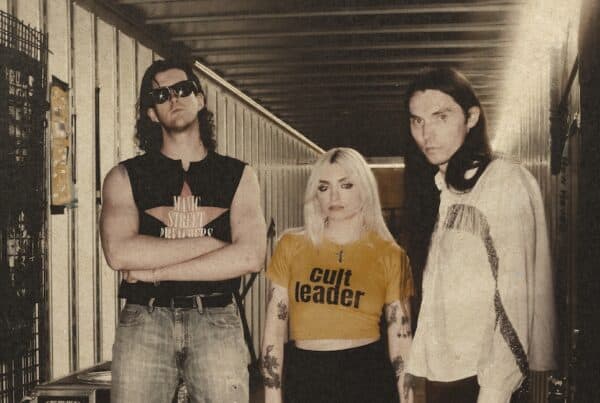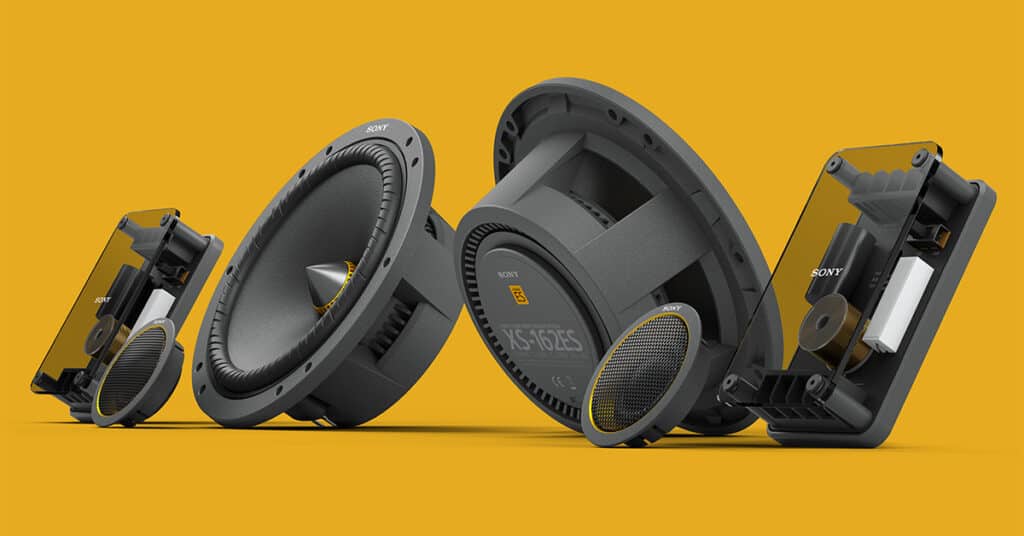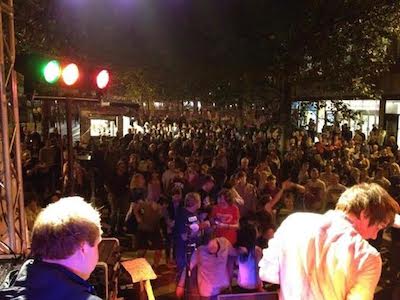In this article, Alex Gregson from 344 Audio will discuss the planning and execution of their new audio post production studio, and how to stand out in the crowded world of sound.
[like_to_read][/like_to_read]
Over the past 5 years, 344 Audio has been providing full audio post production services to independent filmmakers and commercial directors all over the world from their home in Manchester. After working on everything from broadcast projects on Channel 4 and Channel 5, to internationally renowned films and commercials, Alex felt it was time to create a purpose built space that caters to the needs of these clients, who want to relax and get lost in the world of creative sound design.
Why Manchester?
Manchester has the fastest growing creative sector outside of London, and is home to some of the UK’s most eclectic commercial directors and filmmakers. It is filled with agencies, artists, craftspeople, directors and production companies. It felt only natural for me to open our studio here, after successfully working with clients from London, Europe and the U.S.A. remotely.
Being close to Manchester Airport and having good travel links allows visitors to work with us throughout the entire process, or even just for a day of final approvals. As well as providing a central location for visitors, the reasonably priced commercial space for rent here is invaluable when looking at costs and pricing. This allows for more time to get creative, instead of trying to finalize projects to meet budgetary restraints.
Visitors from outside of Manchester will now have an excuse to come and experience our unique culture. The city centre and surrounding areas have lots to offer creatives, from our world class coffee shops and restaurants, to our wacky yet creative Northern Quarter. Our specific location is great, because it is outside of all the hustle and bustle.
In Manchester, there are very few people working in post sound, which provides more opportunities for us. We don’t have to bid against others for the same work very often and that allows us to put all of our focus into one thing; making your project the absolute best it can be.
Manchester has always been my home. It has supported me in countless ways both in business and personal growth. For this reason, I want to stay in Manchester and put the results of its continued support back into the local economy, as well as give back to the organisations who have helped throughout my journey.
How to Stand Out in Sound
In the 2 year planning and execution of the studio build, the most apparent thing was the need to have a look that celebrated local and national historic culture. The studio is industrial themed, after Manchester’s heritage, and includes a host of antiques that were sourced over a number of months. I believe this is one of the studio’s strongest points, and visitors from the UK and internationally have commented on how this theme makes the space more relaxing than a typical post studio.
Another way we stand out is through our online presence. We post content every day, and have a social media schedule that includes video blogs, product reviews, free sound effects and much more. Followers often revisit the Facebook page and interact with our posts, which definitely helps when demonstrating our knowledge and abilities to prospective clients.
From the beginning, one of the most common feedback points we received from Directors was that the audio post process had been less than ideal on their previous projects. This was due to a lack of ability of Sound Designers to interpret revision notes, an inefficient workflow and a lack of time to experiment. That’s why we wanted to stand out with our four step process, which keeps things simple from spotting sessions to final delivery. We built an integrated delivery system on our website which allows clients to review the sound with picture, and make notes all in one place.
Getting involved in pre production is an often overlooked and underestimated part of audio post production. We prefer to get involved as early as possible. With every project, even if the edit is locked, we will do our best to start crafting sounds before we get the cut, and ensure the Director gets to sign off some of the most challenging sound cues. Not only this, but having an additional partner when searching for location sound crew and troubleshooting sound issues early is invaluable to Directors. The best part is, getting us involved earlier on will increase the production value of your film at no additional cost to you.
Finally, we record custom audio content for every project, and not just foley. Be it sound effects, sound design or atmospheric sounds, we are equipped with all the tools we need to provide the personal touch that can make or break a moment in your film. We know that using sound libraries doesn’t always cut it, and if we’re being honest, while sound libraries are a great tool, crafting the sounds in house is much more fun!
DIY Studio Building
Building a sound studio is not for the faint of heart. It involves more than a little perseverance, a lot of research, and a touch of trial and error to get things right. Our room started off as an office space, with no soundproofing or visual interest. The final result is still a pleasant surprise each time I walk in.
We had a budget of £20,000, which had to cover everything from rental deposits to equipment costs and soundproofing walls. We managed to save a lot of money by building soundproofing, furniture and acoustic treatment ourselves. We came in under budget, which left space for future investments in our second room.
We hired a builder to construct the wooden batons that lay the foundation for our soundproof walls. They had to be built with an air gap between them and the original walls. We then added Rockwool acoustic insulation slabs, which aided in sound absorption and helped fill the gap between the batons. After this, we fitted resilient bars which separate the next layer from the wood batons, as well as allowing the wall to flex and absorb longer wavelengths provided by the subwoofer speaker in the room. Finally, two layers of acoustic plasterboard were fitted to the resilient bars and painted to match the room colours. We also constructed a double door followed by a heavy acoustic curtain.
For interior design, we went for neutral colours in the wall paint, absorbers/bass traps and shelving to allow more specific elements to stand out. Using reclaimed wood boards, coach bolts and scaffolding poles, we constructed desks for our equipment and a coffee table. Adding wood stain helped blend the furniture into the room a little better. Some of the antiques placed on our shelves included a chest from the 1800s, various industrial cogs, classic british books, and of course; a Victorian microscope.
Finally, for acoustic treatment, we built 4 soffit bass traps to control low frequency build up in the room corners. These were made from thin timber wood uprights and particle board panels for the top and bottoms. The interiors were filled with acoustic rockwool. We then covered them with a breathable fabric. Our absorbers were a similar approach, with staples to attach the fabric tightly around the wood. We’ve recently added one final touch to our treatment, a rear wall diffuser. Keeping the studio environmentally friendly is one our priorities so we constructed the diffuser using the remaining offcuts from our desk build.
Cutting Edge Creative Tools
Every piece of equipment purchased for the studio was carefully planned to provide an ecosystem that allows for a faster creative workflow, and a high quality signal path. One element we wanted to implement was the use of four screens. We fitted two identical monitors, one for the Pro Tools edit window, one for sound effects searching and miscellaneous tasks. We also fitted a 58 inch TV for client video playback. Finally, we decided to choose the Slate Raven MTi2 for our studio mix controller, as it had the most features in its price range, allowing for custom macros and a touchscreen mix/edit workflow.
We also had to create a 5.1 mixing environment, which meant that there would need a suitable interface and monitoring. We chose the Presonus Quantum for it’s low latency thunderbolt connectivity, ability to group outputs for up to 7.1 monitoring and it’s high quality digitally controlled preamps. We chose the HEDD Type 05 for satellites and ADAM Sub8 for our LFE. After testing one of our mixes on multiple systems, we found these to be the most transparent and comfortable to work with by far.
One of the other largely important tasks was to create a workstation PC that could handle our heavy Sound Design sessions. We got a custom 3XS system from Scan, which had all the bells and whistles needed to bring the studio system together. We spent most of our money on the key components, including the CPU and Motherboard, leaving room for future expansion on the 2 SSD drives and 32GB RAM.
Finally, the inclusion of a large MIDI keyboard, synthesizers and microphones were crucial for creative purposes. We picked up a Korg Minilogue, mixer and guitar pedals for creating ominous drones and synthesized effects. As for microphones, we grabbed an NTG3 for Foley/ADR and an Aston Origin for Voice Overs. All of these elements allow us to not even have to touch Pro Tools to start building elements in front of Directors. We also have an oscilloscope which visually reproduces the sound waves playing in the room, which can aid in the creation of sound.
Combined with the use of our massive 6TB sound library, Pro Tools Ultimate and industry standard sound design plugins, there are more than enough options to get creative with sound here.
Forward Thinking
So what’s next for 344 Audio? The next step is to work towards building a huge sound team under one roof, that tackle the world’s most revered of audiovisual projects. Retaining the workflow whilst growing is part of this vision, and the promise we provide to our clients big or small.
It is also important to create jobs for the many skilled sound designers of Manchester and beyond. A lack of full time opportunities here often leaves engineers jaded and give them no other option to pursue other avenues of income. We want a full service team in house who feel valued and therefore provide value to the end product.
There is also scope for international expansion, especially in creative cities like Manchester. We’ve currently got our eyes on the rapidly growing film industry in Atlanta, Georgia as a potential location for our next studio.
One thing we are striving to do is change the perception of post sound. For many, it can be an afterthought or a problem solving step in the process which is only really 10% of it’s magic. The more creative storytelling aspects would benefit from a wider understanding in the film community. This is one of the missions with our online content, the hope that it will show the true impact that sound can have on your project.
WORDS: ALEX GREGSON





